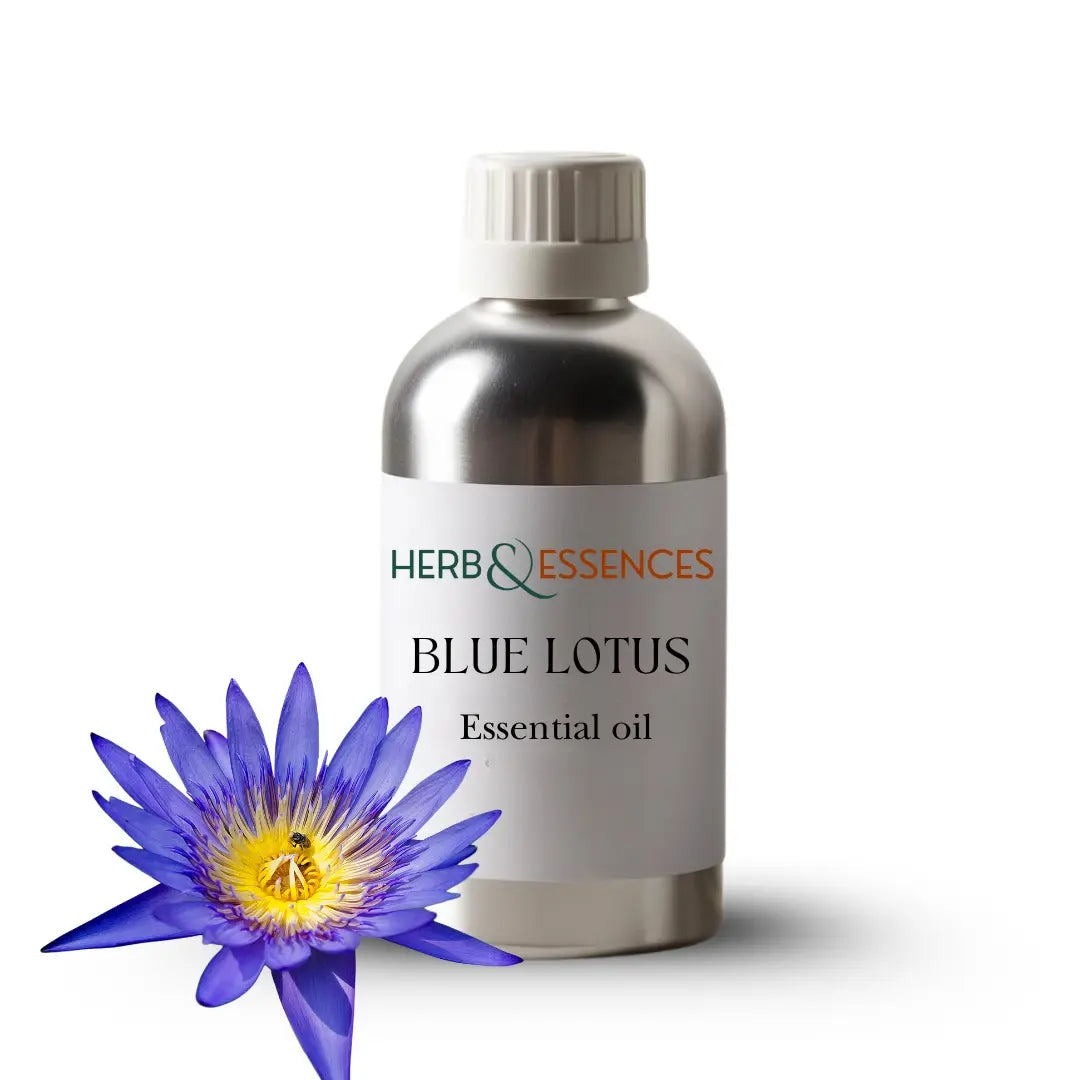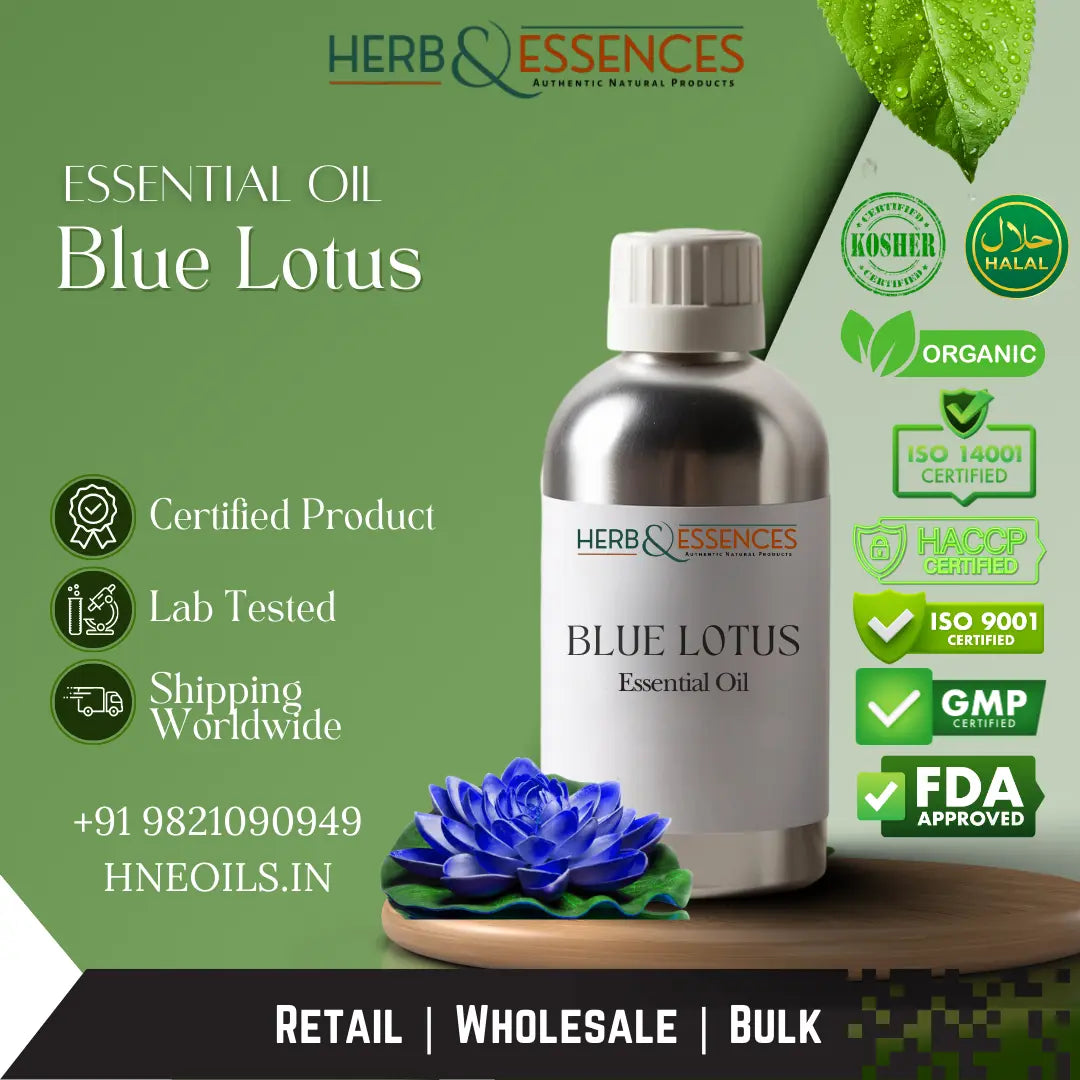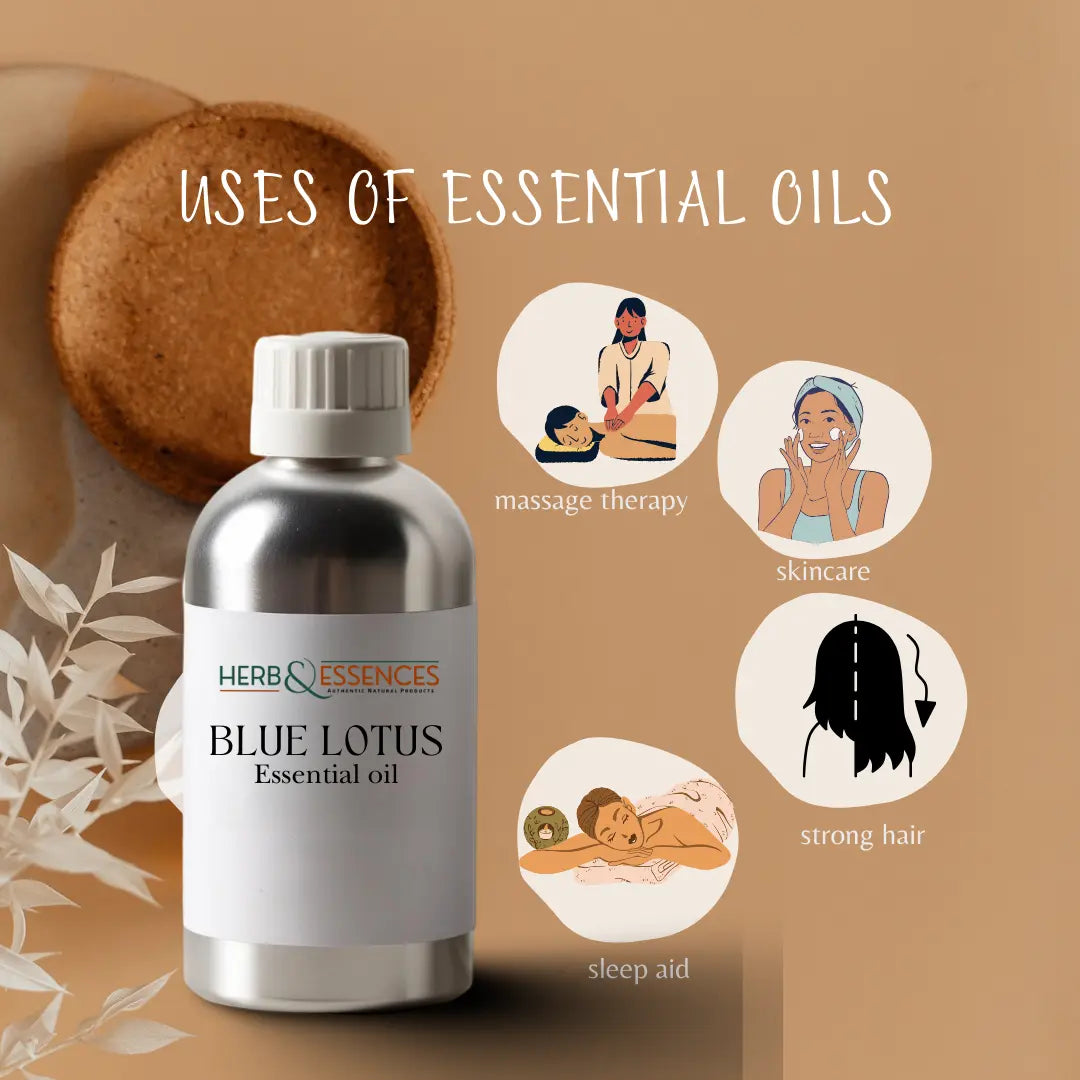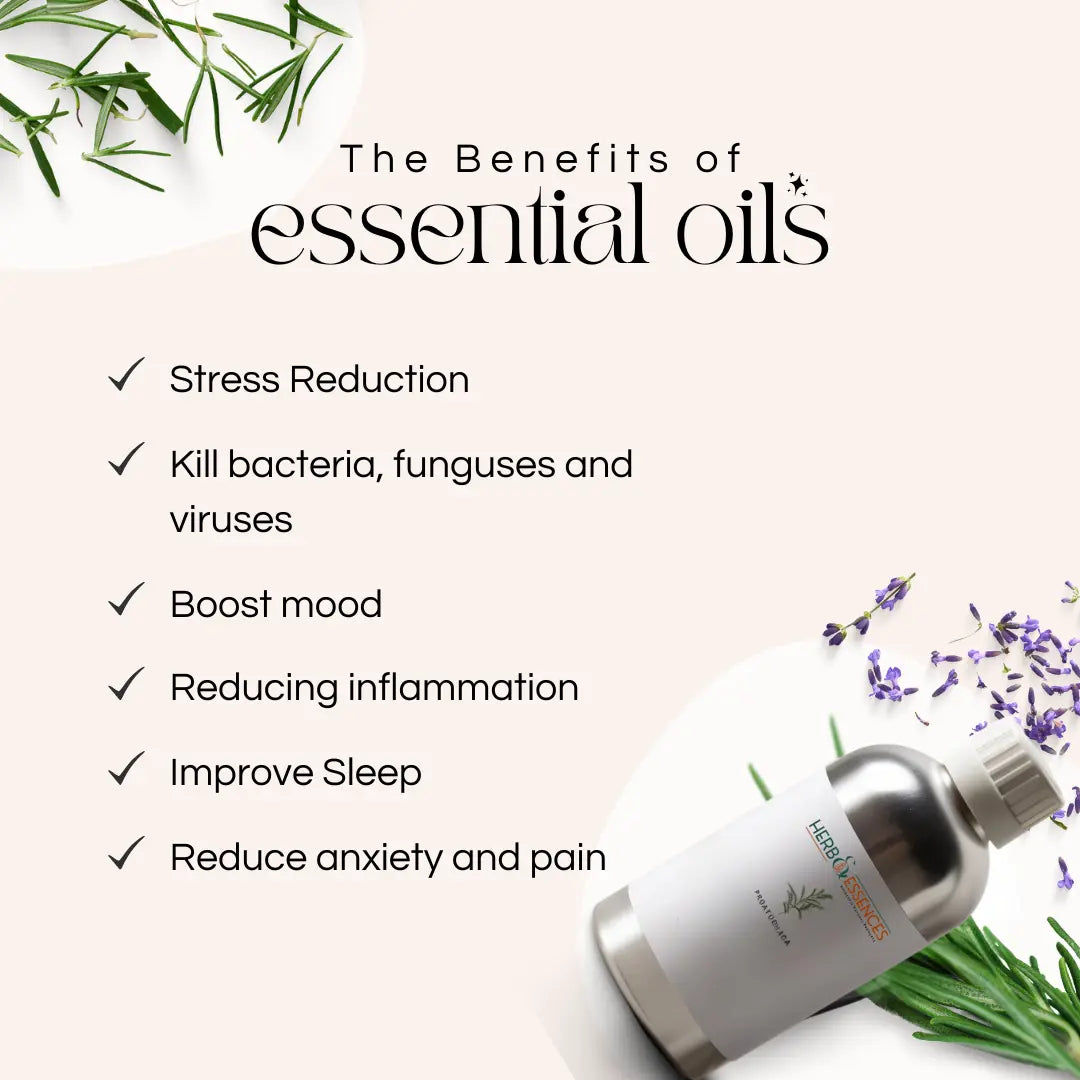Blue Lotus Essential Oil
Blue Lotus Essential Oil
Couldn't load pickup availability
Share
Blue Lotus Essential Oil
Botanical Information
Blue Lotus essential oil is derived from the flowers of Nymphaea caerulea, commonly known as Blue Lotus or Egyptian Lotus, a water lily belonging to the Nymphaeaceae family. Revered in ancient Egyptian culture, Blue Lotus is celebrated for its mesmerizing floral aroma and its calming and spiritual properties. The oil has deep roots in wellness rituals, perfumery, and spiritual practices.
Origin and Source
Blue Lotus thrives in tropical and subtropical regions, particularly in water bodies like ponds and lakes in Egypt, Thailand, and India. The essential oil is primarily sourced from sustainably cultivated or wild-harvested flowers, ensuring the preservation of its native ecosystems. These regions provide optimal conditions for the plant’s growth and its unique aromatic qualities.
Extraction Method
Blue Lotus essential oil is typically obtained via solvent extraction:
· The delicate flowers are processed using solvents to extract their aromatic compounds, yielding an absolute with concentrated fragrance and therapeutic properties. This method preserves the oil’s complex floral profile.
· In rare cases, steam distillation may be used, though it is less common due to the fragility of the flowers.
Physical Properties
· Appearance: Deep golden-yellow to amber liquid with a rich, viscous texture.
· Aroma: Exotic, floral, sweet, and slightly earthy with hints of spice.
· Viscosity: Medium to thick, requiring careful dilution for ease of use.
· Solubility: Insoluble in water; soluble in carrier oils, alcohol, and aromatic solvents.
Technical Specification
· Specific Gravity: 0.940–0.980.
· Refractive Index: 1.480–1.500.
· Flashpoint: Approximately 85°C.
Uses and Applications
· Aromatherapy: Provides calming and euphoric effects, supporting emotional balance and stress relief.
· Perfumery: Acts as a luxurious base or middle note, adding depth and elegance to fragrance compositions.
· Skincare: Used in serums, creams, and masks for its soothing and nourishing properties.
· Massage Therapy: Blended with carrier oils for relaxing and grounding massages.
· Spiritual Practices: Incorporated into meditation and rituals for its ability to enhance mindfulness and connection.
· Wellness Rituals: Promotes relaxation and inner peace when diffused.
Benefits and Properties
· Calming and Euphoric: Helps ease stress and anxiety, fostering emotional well-being.
· Skin-nourishing: Hydrates and rejuvenates the skin, leaving it smooth and radiant.
· Aromatic Richness: Enhances blends with its unique exotic floral scent.
· Mood-enhancing: Acts as a natural aphrodisiac, promoting relaxation and positivity.
· Spiritual Upliftment: Supports meditation and spiritual connection, creating a serene atmosphere.
Safety Information
· Dilution: Always dilute Blue Lotus essential oil with a carrier oil before applying directly to the skin.
· Patch Test: Test a small area of skin to check for sensitivities or allergic reactions.
· Avoid Contact: Keep away from sensitive areas, such as the eyes and open wounds.
· Medical Precautions: Consult a healthcare professional if pregnant, breastfeeding, or undergoing medical treatment.
· Keep Away: Store safely out of reach of children and pets.
Storage and Shelf Life
· Storage: Store in a cool, dry place away from sunlight, heat, and moisture. Use amber or cobalt blue glass bottles to preserve the oil’s aromatic and therapeutic properties.
· Shelf Life: Typically lasts 2–3 years under optimal storage conditions.
Packaging and Handling
· Packaging: Glass bottles are ideal for smaller quantities, while HDPE containers are suitable for bulk storage.
· Sealing: Ensure containers are tightly sealed to prevent evaporation and contamination.
· Handling: Use clean and sterilized tools during transfer or application to maintain purity.
Sustainability and Ethics
· Eco-conscious Practices: Produced using sustainable harvesting methods to protect Blue Lotus plants and their ecosystems.
· Cruelty-free: Not tested on animals, adhering to ethical manufacturing practices.
· Vegan-friendly: Contains no animal-derived components, suitable for eco-conscious consumers.
· Fair Trade: Often sourced through initiatives supporting local farmers and promoting sustainable livelihoods.








